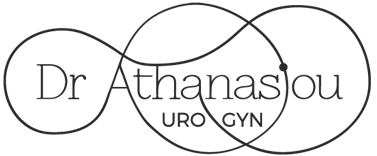Uterine prolapse – Symptoms, Causes and Methods of Prevention
What is prolapse
Prolapse is a condition in which one or more of the pelvic organs bulge or herniate into or out of the vagina, often giving the sense that “something is dragging.” The pelvic organs (bladder, uterus and rectum) are supported by tissues and ligaments. Prolapse occurs when the network of supporting tissues and ligaments become too weak to hold them in the correct position.
Pelvic organ prolapse is a common condition affecting not only menopausal women but also younger women. Prolapse can significantly affect the woman’s quality of life; however with proper assessment, planning and individualized treatment it can be successfully repaired.
Common types of prolapse:
- Uterine prolapse
- Vaginal prolapse
- Rectocele
- Enterocele
- Cystocele
Uterine prolapse – Symptoms, Causes and Methods of Prevention
Common symptoms include:
- A heavy sensation in the vagina or lower back
- A feeling of a lump in or out of the vagina
- Problems with the urinary system, such as slow flow, a feeling of incomplete emptying of the bladder, urgency of micturition or even urinary incontinence (stress or urgency urinary incontinence)
- Frequent urinary tract infections
- Discomfort during sexual intercourse
The above symptoms may be worse towards the end of the day.
The diagnosis of POP is easily made during clinical examination by a gynecologist
What are the reasons for uterine prolapse?
The pelvic organs are prolapsed due to weakening of the tissues and the ligaments that support them. This can occur due to:
- Pregnancy and childbirth, which are the most important factors in the occurrence of uterine prolapse
- Menopause
- Conditions that cause excessive pressure on the pelvic organs, such as obesity, persistent cough, weightlifting or chronic constipation
- Other medical conditions that can damage the muscles, nerves and tissues in the pelvis. In rare cases, an abdominal or pelvic tumor can cause uterine prolapse or the deterioration of the existing prolapse.
Which women are more likely to suffer from uterine prolapse
- About half of women who give birth will have some form of prolapse, to a greater or lesser degree, but only 1/5 of these women need medical help
- Prolapse can also occur in women who have not given birth, particularly if they are lifting heavy items.
- Prolapse can also occur in women who have had a hysterectomy.
Preventive treatment of prolapse
As with any problem, it is better to prevent prolapse than to cure it. If you have a family history, you are more likely to have a prolapse than the general population.
As prolapse is due to the weakness of the pelvic tissues and muscles, all women should keep these muscles strong, regardless of their age.
The pelvic muscles can be strengthened and maintained in good condition through exercise and specifically with the right combination of exercises. The Kegel exercises are ideal pelvic floor strengthening exercises that will help prevent the onset or deterioration of pelvic organ prolapse.
The following are worth mentioning:
- The best precaution seems to be adequate time between deliveries so that the tissue of the genital area has the time to recover from the trauma of childbirth.
- Excess weight is an additional reason that exerts pressure on the pelvic walls. Therefore, a good diet and regular exercise are essential.
- Avoid constipation by adding fiber to your diet, drinking more water, and incorporating physical activities into your daily life, such as walking.
- If you have chronic cough, avoid smoking
- If you need to stand for long periods, take breaks to sit down and thus release the pressure exerted by gravity.
- Be extremely careful if any of your immediate relatives have had a prolapse, as research shows that you are much more likely to have it in case of family history.
Nowadays, uterine prolapse is treated with minimally invasive techniques with a speedy recovery as long as the correct assessment and treatment are done by a specialized, experienced doctor.
Tell us about your problem
Fill in the form with your information and we will contact you shortly to make an appointment with the Doctor.
